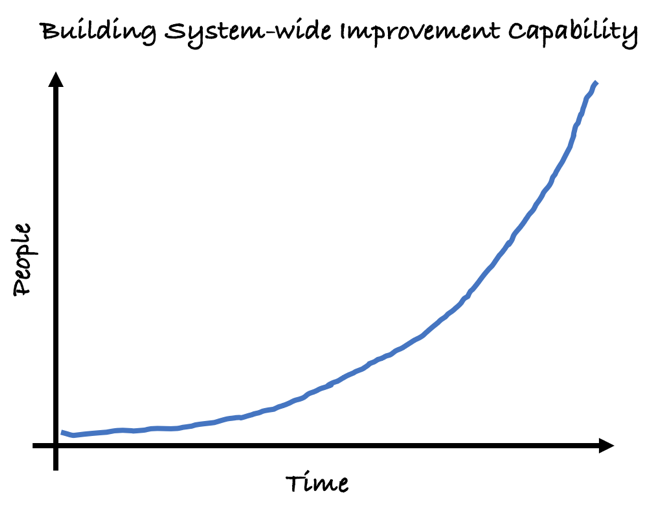As organizations pursue quality as a business strategy, they quickly realize a need to develop improvement capability across the workforce. This requires understanding what people need to know, who needs to know what, and what is the best way to learn.
This is part four of a four-part series. You can read part one here, part two here, and part three here.
From Small to All
Many years ago, John Whittington, MD, one of the thought leaders behind the IHI Triple Aim, shared a profound reflection of a common issue in improvement. People begin without clearly defining what good looks like at scale. They start at a small scale with ambitious aims and begin to chip away at the work, but they struggle to get to scale because they did not consider the journey or the final destination.
Building improvement capability across an organizational system is a long-term strategy and requires asking some key questions. What does full-scale look like for your organization? How can you begin and build with a conscious strategy overtime? What will success look like in the end?
Beginning with the end in mind enables you to sketch out a back-of-the-envelope theory for what it will take to go from the starting point to full scale. It should begin with a manageable pilot of teams but evolve to reach everyone in the organization.

At regular intervals, pause and study what you are learning against your original theory. How are people learning the appropriate skills, applying them to improve their own work, and being supported by a structure of processes and improvement advisors and coaches? What from our original strategy do we need to adapt or add in based on what we are learning? How do we build the system to be sustainable and embedded as we move from small to all? How do we onboard new people?
The right answers are what’s right for your organization, for its readiness, and for what makes sense for this moment in your journey. There is no exact dosing formula or treatment regimen to prescriptively figure it out. It requires understanding your current state and your specific aims, building a results-oriented vehicle for doing the right work, and then wrapping around traditional training, application, and continuous coaching to apply and learn these foreign tools and methods with fidelity and to build improvement muscle one PDSA at a time and in-service of results. And finally, it’s about building an organizational system that’s hardwired for quality — hardwired to get the results it aspires to for its customers every time.
—
If this was helpful, share and include me @DaveWilliamsATX. Sign up here to receive a monthly email from me that includes all my blog posts and other Improvement Science resources I think you’d appreciate.
